DRAFT – DRAFT – DRAFT – DRAFT – DRAFT – DRAFT
Conceptual paper on Continental Divide Wilderness and Recreation Act Proposal (HR 2554) for discussion purposes only December 13, 2016
Who we are:
We start first with a brief description of each Organization, in order to allow a complete understanding of our concerns. The Colorado Snowmobile Association (“CSA”) was founded in 1970 to unite winter motorized recreationists across the state to enjoy their passion. There are 30,000 registered snowmobiles in the State of Colorado. CSA seeks to advance, promote and preserve the sport of snowmobiling in Colorado by working with Federal and state land management agencies and local, state and federal legislators.
The Colorado Off-Highway Vehicle Coalition (“COHVCO”) is a grassroots advocacy organization of 150,000 registered OHV users in Colorado seeking to represent, assist, educate, and empower all OHV recreationists in the protection and promotion of off-highway motorized recreation throughout Colorado. COHVCO is an environmental organization that advocates and promotes the responsible use and conservation of our public lands and natural resources to preserve their aesthetic and recreational qualities for future generations.
The Trail Preservation Alliance (“TPA”) is a Colorado based 100 percent volunteer organization whose intention is to be a viable partner, working with the United States Forest Service (USFS) and the Bureau of Land Management (BLM) to preserve the sport of trail riding. The TPA is an advocate of the sport and takes necessary actions to help insure that the USFS and BLM allocate to trail riding a fair and equitable percentage of access to public lands.
The Off-Road Business Association (ORBA) is a national not-for-profit trade association of motorized off-road related businesses formed to promote and preserve off-road recreation in an environmentally responsible manner based in California.
Landscape Concerns
- Any previous Congressional boundaries for existing Wilderness or release of areas for multiple use or prohibitions on buffer managements and designations must be honored as previous legislation was badly out of balance in terms of protecting usages and often we are now talking about designation of areas previously released.
- Resolution of WSA issues is a priority for the motorized community in numerous areas.
General concerns regarding Continental Divide Wilderness and Recreation Act Proposal (HR 2554)
- Overall HR 2554 is a Wilderness bill designating 35,449 acres of Wilderness and another 16,621 where public access is restricted despite the already high levels of Wilderness designated in the State. Currently 15.7% of USFS lands in Colorado are designated as Wilderness. By comparison, less than 2% of USFS lands are designated as Wilderness in New Mexico.
- While Colorado has historically been effective in moving large areas of public lands into Wilderness designations, there has been no release or protection of lands to balance usages and protections in previous legislation. As a result of the lack of balance in previous Legislation a very small amount of lands is suitable for new Wilderness designations but there are many areas where uses could be protected and Wilderness study area reviews can be permanently resolved. Recreational usage of these areas represent major economic drivers for local communities and once management clarity is provided in Legislation additional funding for maintenance and improvement of these important resources can move forward.
- Colorado has a benchmark for a balanced land use bill that can be supported by a truly diverse range of interests in the Hermosa Watershed Legislation that was passed into law in 2014. When compared to the Hermosa Legislation, HR 2554 falls well short of obtaining the diversity benefit for multiple use and other interests that are claimed. In Hermosa, access to public lands was provided at a more than two to one ratio when compared to designated Wilderness in the Hermosa Legislation.
- Similar to previous legislative actions designating Wilderness, current versions of HR 2554 provides no new opportunity areas for multiple use or increases protection of multiple use access areas for the general public. This is contrary to claims of balance in the Proposal. It is our position HR 2554 simply results in a significant net trail loss as almost every area proposed to be designated as Wilderness negatively impacts multiple use recreation at some level.
- HR 2554 creates a single Special Management Area (Ten Mile) where multiple use is alleged to be balanced. This area has exceptionally limited opportunities currently (less than 10 miles of route) and minimal opportunity for growth due to topography of area and the value of this area for multiple use is questionable at best. The Tenmile SMA protects significantly less miles of routes than are lost in other areas of the Proposal (Spraddle Creek, Williams Fork)
- Many of the areas that we are requesting to be Congressionally designated as a “special management area” have been the basis of on-going discussions for possible Wilderness designations since the area was declined for suitability either through the RARE process or WSA inventory process in the late 1970’s. We would like to confirm/protect multiple use in these areas by designation of SMA. The SMA principal, with the proper criteria, appears to be effective vehicle to achieve this goal based on the Hermosa Legislation implementation.
- Many of the areas proposed to be Wilderness in HR 2554 were analyzed for possible Upper Tier Roadless designation in the 2011 Colorado Roadless Rule. After these areas were found unsuitable for Upper Tier designation in the Roadless Rule process, many view the Legislation as another route to obtain closure of these areas and another step in the never ending discussion working towards a Wilderness designation.
- Most areas proposed to be classified as Wilderness under HR 2554 are not currently managed as recommended Wilderness in existing planning and as a result designation as Wilderness could impact many other uses.
- Our Proposal extends outside Congressman Polis district, as we simply cannot balance the impact of 60k acres of Wilderness/closure with the opportunities in that district. Much of our Proposal in Congressman Polis district asks that commitments made in previous Wilderness Legislation be honored. Support from Udall/Polis/Bennett Offices to move forward with honoring these commitments (Rollins Pass Road) has been non-existent to date.
Existing trail areas that would be lost under current version of HR 2554
1. Spraddle Creek Potential Wilderness area §2(a) pg 4 line 9 – 2,338 acres proposed- MAJOR IMPACT TO CURRENT ACCESS
- The Spraddle Creek Potential Wilderness contains an extensive high quality summer trail network for motorized and bicycle community centered around FSR 700/719 that would be lost. These are important routes due to their proximity to local population centers. There are more miles of multiple use routes are lost in the Spraddle Creek Potential Wilderness area than are protected in Tenmile SMA.
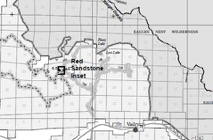 Spraddle Creek Summer MVUM |
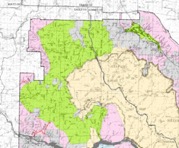 Spraddle Creek Current Snowmobile Suitability |
(Each represents lost opportunity with expanded Wilderness)
- The Potential Spraddle Creek Wilderness represents an important snowmobile opportunity areas that would be lost.
- Many users believe that closure of this area was due to 10th mtn. hut in area. Almost all 10th mtn. division huts now have a buffer area, as a result of recent planning which has resulted in the long term loss of motorized opportunities around huts. Users are very sensitive to additional lost opportunity around any of the huts.
- Is there precedent for automatic change of any area to Wilderness designation merely with the passage of time? Adopting such a principal could set a dangerous precedent moving forward and HR 2554 provides no requirement that mitigation measures be completed prior to moving to the Wilderness designation. Mitigation measures can frequently take more than the 10 years to complete.
2. Spraddle Creek Wilderness- §2 pg 4 line 3 MAJOR IMPACT TO CURRENT ACCESS
- Numerous summer routes in the new Spraddle Creek Wilderness area and this area is an expansion area for future winter motorized usage. Motorized routes 786 and 719 currently exist in the area and dead-end at two scenic overlooks. With the addition of the Spraddle Creek Wilderness access to these overlooks would be lost and 786 and 719 outside the Wilderness would be at risk for closure moving forward as these trails would now just dead-end at the Wilderness boundary.
- The snowmobile community worked hard with the USFS in recent planning to establish a boundary that was easily enforceable in the area for snowmobile usage(currently on top of a cliff). Expanding the Wilderness would again move the boundary into an area where enforcement would be difficult at best and probably result in a large amount of conflict and enforcement expense. Relevant maps are included with #1 above.
3. Williams Fork Wilderness §2(a)(25) 9,338 acres- MAJOR IMPACT TO CURRENT ACCESS
- There are significant miles of multiple use routes in the northern end of the proposed Wilderness area addition that would be lost. These routes are all heavily used routes in the summer due to their proximity to Green Mountain Reservoir and other developed recreational resources such as campgrounds. The entire area that is proposed to be designated Wilderness is an expansion area for future snowmobile usage
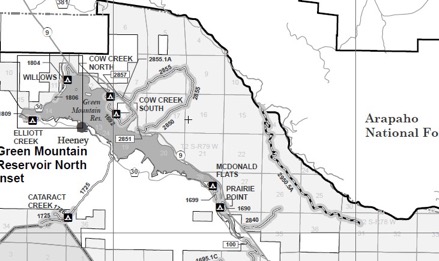
Williams Fork Wilderness Current Summer MVUM

Williams Fork Wilderness Winter Suitability
(Each represents lost opportunity with expanded Wilderness)
4. Freeman Creek Wilderness – §2 pg 3 line 23 – 1,290 acres – significant long term concerns due to proximity
- Expansion of Wilderness in this area could prohibit OSV usage connecting Spraddle Creek area to Spring Creek groomed network north of Eagles Nest Wilderness. This type of a connection was left as a long term option in the recent travel plan for the area. We understand there is some conflict over exact location of Wilderness boundary and any groomed route developed in the area in the future. This is a major concern as any possible routes that could connect the areas are limited due to rugged topography of the area.
- A connection of Spraddle Creek and Spring Creek areas would be highly valued by OSV community as currently Spring Creek trailhead is a lengthy drive (more than 1 hour) on US 9 north of Frisco. With this connection, access to the Spring Creek area would be a short drive outside Frisco.
- We are concerned that the proximity of a possible groomed route/existing designated summer route and this Wilderness boundary. Our concern is the expanded boundary would result in significant conflict between users and also present a major management issue for the USFS due to increased signage etc. The close proximity of these management areas has resulted in significant conflict in other areas.
5. Ute Pass Wilderness/Acorn creek/Ptarmigan Addition – §2(a)(1) Acres 6349- Significant long term concerns due to expansion
Entire area is available for expansion of OSV usage in the future – – maps are attached in item #3.
6. No Name Wilderness Significant long term concerns due to proximity and expansion
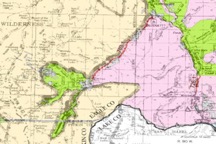 Ute Pass Wilderness/Acorn creek/Ptarmigan Addition – Winter suitability currently |
 Ute Pass Wilderness/Acorn creek/Ptarmigan Addition – Current summer travel |
(Each represents lost opportunity with expanded Wilderness)
- Entire No Name area is a winter expansion area in the future and would convert FSR703 to a cherry stem into an important OSV area for winter usage as there would now be Wilderness on both sides of the route.
- FSR703 is the Holy Cross City route that is consistently identified as one of the top ten OHV routes in the country.
- Additionally, the eastern Boundary is a currently designated summer route and expanding the boundary would result in conflict between usages.
7. Hoosier Ridge Wilderness Area significant long-term concerns due to proximity to heavily used areas
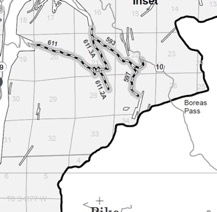
Boreas Pass area is a major summer destination area. Given the proximity of the Wilderness to highly used routes, conflict between these uses would be a concern.
8. Tenmile Wilderness
Minimal concerns as area is closed to motorized and not an expansion area for snowmobile usage in the future
9. Porcupine Gulch Protection area – §4
Prohibits motorized and mechanized travel-
Tenderfoot Mountain project is within the boundary and would be lost Heavily used winter trail network in the area that would be lost?
10. Tenmile Special Management Areas – §3 pg 8 line 6 -Acres 11,417 – very minimal benefit
- There is an exceptionally limited benefit to the multiple use community from proposed designations/usages of the SMA due to small amount of routes in the SMA. The SMA also prohibits any road development in the future in this area, which is more restrictive than current management of the area. Non-motorized usages does not appear to be subject to this limitation.
- There are only a small amount of roads in the area and is a limited long-term opportunity area given the difficult topography of the area. Despite claims of high-value recreational opportunity from these protections, the area is not a high priority for the motorized community. We must question value to any user group given the topography and restrictions moving forward.
- The criteria for management of the area are a concern as multiple usages are not a characteristic to be protected and preserved in the area. pg 9 line 4 . Multiple usage must be on balance with other usages or these usages will diminish moving forward.
- Designation of the Tenmile SMAV expands impact of Hardscrabble SRMA closures in recent BLM Colorado River Valley RMP on motorized community. Hardscrabble remains a difficult topic with many users in the area as trails built and maintained by motorized are now open only to bicycles.
- The SMA relies heavily on the principal of a “vehicle class” which is not defined in the Legislation and is not a term defined in standard USFS travel planning. This principal is probably a major barrier to new usages of the area due to hybridization of recreational activities.
Current commitments in Congressman Polis District to be resolved prior to exploring additional 60,000 acres Wilderness/restricted access in HR 2554
1. Rollins Pass Road issue on Boulder RD
Existing Legislative commitments should be honored prior to any discussions about additional Wilderness in the District.
- The Rollins Pass Road issue is one of the few concessions that was made in previous Wilderness Legislation to try and balance multiple usages. This concession has been of no value to date due to the failure to implement commitments on the ground. The highly detailed commitment was made to reopen a route in this area in 2002 James Peak Wilderness expansion legislation. This commitment was to be implemented if one of three identified counties made a request.1 This commitment has never been followed through with despite numerous requests from multiple counties every year since 2002 and numerous requests in writing to both Sen. Udall and Congressman Polis office’s from user groups and numerous public meetings to gauge continued public support in the route.
- A connector route between Winter Park and Front Range in this corridor would be a valuable route for a wide range of user groups.’
- We are unsure if roadblock on issue is USFS or Boulder County in honoring commitment made in previous legislation.
- We would seek a merged alternative of existing legislation requirements and resources on the ground due to deterioration of road referenced in legislation/maps.
(i) seasonal high clearance road connecting Winter Park and Rollinsville areas utilizing corridor between James Peak Wilderness and Indian Peaks Wilderness that generally honors legislative requirements;
(iii) hard deadline for project completion; and
(iv)source of funding for part/all of the project.
Our Ask for Rollins Pass Road Issues
This is a previous commitment regarding an important motorized route that must be honored prior to new commitments being made in Representative Polis district around any Wilderness proposals.
2. Lefthand Canyon OHV Area in Boulder RD –
Existing NEPA planning should be honored in the area and there are serious concerns that the area may never reopen to multiple use.
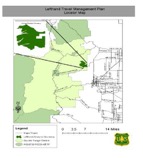
- Only area open to OHV usage within a short travel time of the North Denver area.
- Primary access route and area partially damaged due to 2013 flooding.
- Access remains closed due to the placement of small creek in the primary access road to the area after lead remediation efforts needed due to illegal shooting in the areas. No public input on the location of the creek in the road.
- We know of no planning in place for reopening of the area, even in a preliminary stage. Frequently funding is identified as a concern in reopening the area but the USFS will not support any grant applications for the area.
- Lefthand OHV remains closed to motorized usage despite significant motorized money, obtained without a grant submission being used to repair area after the flood, which we believe is a violation of state law regarding use of OHV fun.
- Possible designation of the area as a special management area based on 2006 NEPA for the area that has never been completed.
- Requires that no fees for usage of the area despite review in 2006 NEPA.
- Strong partnerships for the area are in place but not being used.
Our Ask for Lefthand Canyon OHV area –
Designate area as SMA for world class motorized recreational usage in order to compel managers to take steps to reopen the area in a timely manner
Designations to reopen historical access and new protections for existing usage in Congressman Polis district
1. Pennsylvania Gulch area on Dillon Ranger District
For purposes of this section is referring to Pennsylvania Gulch as the area generally south and east of Breckenridge running east of Route 9 to Boreas Pass and associated fingers to the north as generally outlined in green below
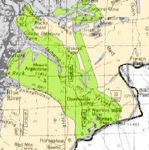 Pennsylvania Gulch – Suitability prior to winter travel plan |
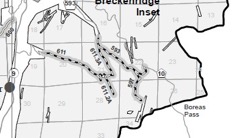 Pennsylvania Gulch – Current summer MVUM |
(Each represents lost opportunity with expanded Wilderness)
- Snowmobile access was closed in recent travel planning to expand non-motorized opportunities.
- No one is using the area in the winter as it is too difficult to access without motorized means or packed ungroomed routes from OSV travel.
- Boreas Pass/Pennsylvania Gulch area also a very important area for summer OHV as well.
- Southern portions of Pennsylvania Gulch was included for Wilderness designations in original version of Hidden Gems.
- Also proposed to be Upper Tier Roadless and not designated.
Our Ask for Pennsylvania Gulch
Designate the area as SMA for world-class motorized recreational usage in summer and winter in order to restore winter access and protect summer.
2. Area northwest of Eagles Nest – Dillon RD Acreage per HG 37,800 acres
- High-quality motorized area both summer and winter at issue all the time for possible Wilderness/closures etc.
- Identified as Crazy Horse Creek, Lower Piney and Elliot Ridge in Hidden Gems
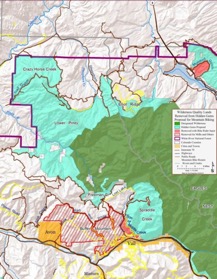
Hidden Gem Wilderness Proposal in Area
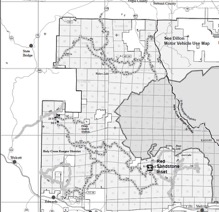
Hidden Gem Wilderness Proposal in Area – Current MVUM for area
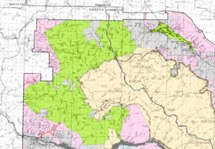
Hidden Gem Wilderness Proposal in Area – Winter Suitability under current planning
(Each represents lost opportunity with expanded Wilderness)
Our Ask for North Eagles Nest Area
Designate the area as SMA for world-class motorized recreational usage in summer and winter.
Areas outside Congressman Polis District where historical usage restored or existing usage protected.
1. North Sand Hills WSA/ISA release in Kremmling FO outside Walden CO 600 acres -protects existing usage
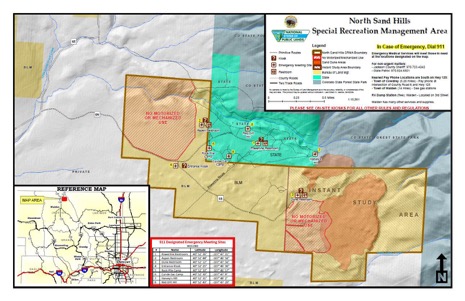
North Sand Hills – Reference map of the area from BLM shows more than release area
- Congressman Tipton’s HR 5570 proposes release
- Highly valued by the motorized community
- Truly broad coalition of users already in place to support the release
- Only about 600 acres in size for WSA/ISA release
Our Ask for North Sand Hills
Release area from WSA/ISA designations and designate area as SMA for world-class motorized recreational usage in summer and winter
2. Uranium mesas east of Gateway – GJFO – Rep. Tipton District Acres TBD – protects existing usage
An important area where planning was deferred in recent planning efforts for GJFO causing concerns for the long-term access to the area.
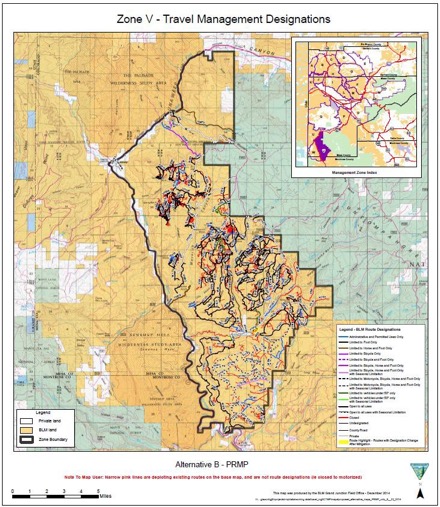
Uranium mesas east of Gateway – Current version of travel management sought to be protected
Levels of closures in draft plan were much higher than the final version- making us very concerned for the long-term future of the multiple use access to the area
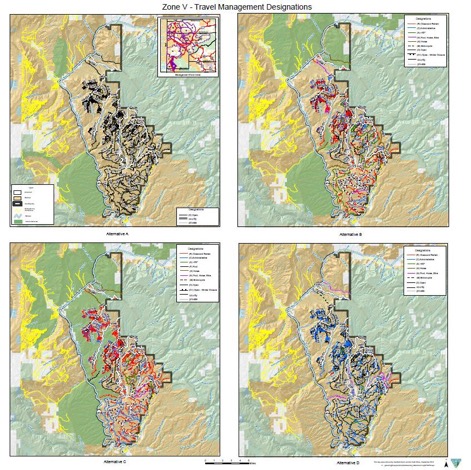
Uranium mesas east of Gateway – Proposed closures in draft RMP
(these maps are included to create understanding in the basis for our concern)
- There are a lot of high-quality riding opportunities in the area that could be at risk in future planning due to proposed closures in recent RMP.
- While the current field office staff has been supportive of usage we are concerned that if there was a staff change these areas would be at risk of closure again.
Our Ask for Uranium Mesas
Designate the area as SMA for world-class motorized recreational usage in summer and continue current access levels
3. North Desert area outside Grand Junction – GJFO – Rep. Tipton District Acres TBD- protects existing usage
An important area where planning was deferred in recent planning efforts for GJFO.
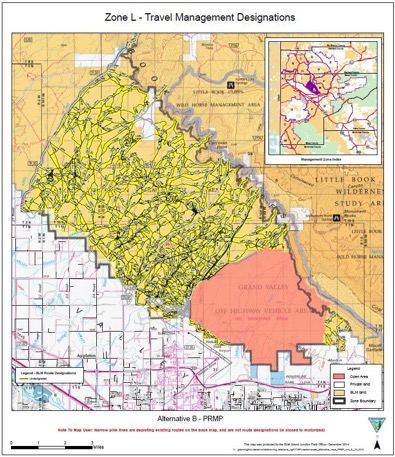
Grand Junction – Current Version of travel management we would like to protect
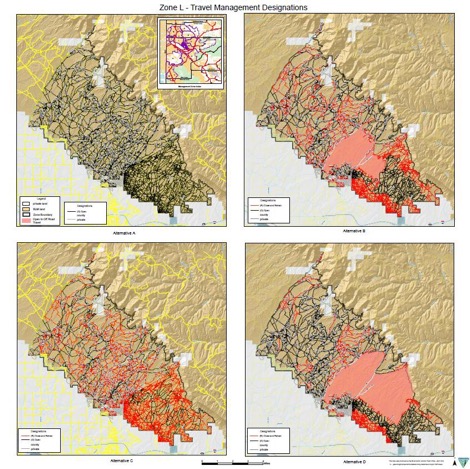
Grand Junction – Proposed closures in draft RMP
(these maps are included to create understanding in the basis for our concern)
- Area was very hard hit with proposed closures in the draft RMP.
- There are a lot of high quality riding opportunities in the area that could be at risk in future planning.
- While the current field office staff has been supportive of usage we are concerned that if there was a staff change these areas would be at risk of closure again.
Our Ask for North Desert
Designate the area as SMA for world class motorized recreational usage in summer and continue current access levels
4. DeBeque single track area- GJFO – Tipton District Acres TBD- restores historic usage
HIGHLY valued areas outside DeBeque Colorado that was closed in recent BLM planning
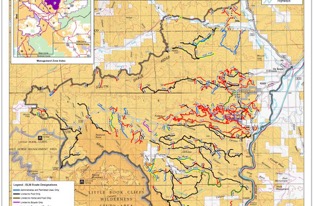
DeBeque – red routes on map above represent closures of DeBeque Trail network
- Can honestly be summarized as some of the best single track trail riding in the multi-state region.
- Political working group already in place on the issue – believed to include Brian Meinhart with Congressman Tipton; Mesa County; Town of DeBeque; Betsy Bair with Sen Gardner Office and State Rep Willette.
- Long history of legal motorized and multiple use trail usage in the area.
- BLM used motorized groups to “voluntarily close” routes prior to plan and then RMP closed all routes anyway.
- Detailed proposal for area is attached.
Our Ask for DeBeque
Designate the area as SMA for world-class motorized recreational usage in summer and restore access to something similar to previous levels
5. Red Table/Adam Mountain/Woods Lake and related areas- Mostly Rep. Tipton – protects existing usage Acres 1,750/6,900/11,970
Important multiple use recreational area that struggles from ongoing possible designation as Wilderness despite numerous unsuccessful attempts to designate the area. Also was reviewed and found unsuitable for upper tier designation as part of the Roadless Rule.

Red Table – Hidden Gems Proposal
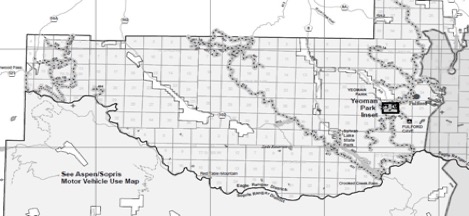
Summer MVUM of Red Table area
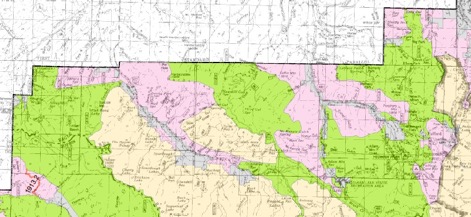
Winter suitability of Red Table area
- Large amount of motorized recreation in this area both summer and winter.
- Proposed Wilderness in HG that was removed early in the discussion .
- Large portions of the area were again proposed to be Upper Tier Roadless and then declined for designation.
- Any trail construction or maintenance in the area remains problematic due to previous Wilderness discussions.
- Specific boundaries are open for discussion.
Our Ask for Red Table and related
Designate area as SMA for world class motorized recreational usage in summer and winter
1 See PL 107-216 at §7b.
DRAFT – DRAFT – DRAFT – DRAFT – DRAFT – DRAFT






















